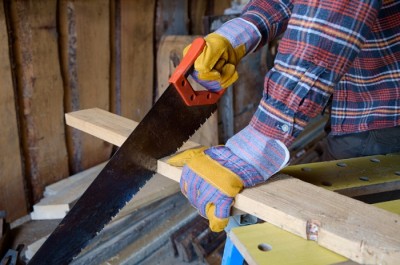 Regardless of whether or not a farm operates with the assistance of grid power, tools are an essential component of a functioning operation. Jobs both big and small require more than what can be accomplished through our hands alone — thus we must enlist the aid of various implements.
Regardless of whether or not a farm operates with the assistance of grid power, tools are an essential component of a functioning operation. Jobs both big and small require more than what can be accomplished through our hands alone — thus we must enlist the aid of various implements.
Chores on the farm often require more specialized tools than those found in city garages and workshops. The question for many homesteaders becomes, which tools are needed on their farm and should they be powered by electricity, hydraulics, air or simple manpower? Each of these options has its own advantage and disadvantage that must be considered before the homesteader decides which tools to acquire.
The advantage of power tools is obvious. The amount of human input required to produce the output obtained by power tools is unmatched by simple hand tools. The disadvantage of power tools is derived from the very fact that they require external power in order to produce the required output. If the power is out, they’re useless.
This is where the advantage of hand tools prevails. A hand tool only requires the input that a human can provide. The limitation of hand tools, though, is clear: Bigger jobs require more input. The output of the tool is limited to the user’s strength and dexterity. Let’s examine, though, some hand tools that have been replaced over the years by power tools, but are still very capable of getting the job done.
Drills and screwdrivers are perhaps the most common hand tools that have been replaced by their power tool rivals. Electric drills can make quick and easy work in everyday use, but in many cases the hand-powered bit brace can accomplish the very same task with no need for electric outlets or rechargeable battery packs. Take, for instance, the need to drill holes in a wooden post in order to hang a gate, a very rudimentary chore on a homestead. To execute this task with a power tool requires a very long extension cord, a portable generator, or a fully charged battery pack. The bit brace, however, only requires that you bring it to the site. With a properly sharpened auger bit, a bit brace can make easy work of mounting a gate to a wooden pole.
Some will claim that a bit brace cannot exert the same torque as an electric drill, but this misconception is brought about due to the misunderstanding of the various type of bit braces available. The larger the bit brace, the more torque they can produce.
Saws are another tool that power tools have overtaken. Sawing by hand can be labor intensive and does take considerably longer to accomplish than with the use of a circular or table saw. Accurate and repeatable cuts are also more difficult to achieve with hand saws than with their powered counterparts, but with practice similar results can be obtained.
Price is also an issue to consider when deciding whether to go with power or hand tools. Some hand tools are no longer manufactured, or if they are it is through specialty shops. This can cause the price of their acquisition to rise above power tools, but a careful shopper can still find good deals on hand tools they need. Other hand tools, such as screwdrivers and wrenches, are much more affordable than their powered counterparts and with proper use can often outlast machines with electronic components. It is important to consider longevity and replacement costs when purchasing tools.
In the final analysis, a balanced mix of both hand tools and power tools will be the appropriate strategy for the off-grid farm. Just be careful to study all of the options when making a tool purchase. Whether your shop is stocked with power tools or hand tools, proper care and maintenance is required to extend their lifecycle and replacement costs.
When do you prefer hand tools over power tools? Tell us in the comments section below.
Sign up for Off The Grid News’ weekly email and stay informed about the issues important to you
 Off The Grid News Better Ideas For Off The Grid Living
Off The Grid News Better Ideas For Off The Grid Living




